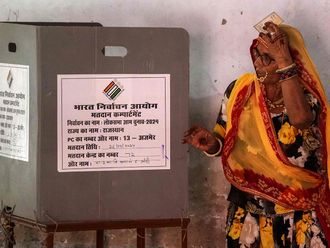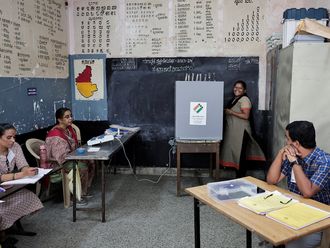A look at the currency rate chart between the US dollar and the Indian rupee shows that it’s Diwali season again. While the value of the rupee remained steady at an average of Rs55.50 (Dh3.75) to the dollar between mid-May and mid-September 2012, it dropped sharply in the weeks ahead of Diwali to a four-month high of Rs51.70, only to reverse from there to a meagre Rs53.81 on November 2.
The pattern was similar to last year, on the back of higher demand for the Indian currency mainly due to transfers from non-resident Indians (NRIs). “Over the past two years, we have seen a strong recovery of the rupee ahead of Diwali, triggered by increased remittances from NRIs,” says a Qatar-based economic analyst associated with Nomura.
NRI contribution
Remittances from NRIs from this April to next March may exceed $75 billion (Dh275.4 billion), up from $66 billion in 2011-12, the Associated Chambers of Commerce and Industry of India said in a September study that quoted World Bank data, “the main reason being the decline in the rupee value against the dollar”.
Indeed, the Indian rupee has lost more than 20 per cent since 2011 to the US dollar and thus to the UAE dirham, leading to fiscal deficits and a slowing down of India’s GDP growth. “Even though the rupee may not see as much depreciation as it did in the past 12 months, remittances would remain robust and may well cross $75 billion in 2012-13,” the study said.
This means that a possible profit out of a money transfer around Diwali is determined by timing. People who sent this year’s Diwali transfers on October 4 would have ended less fortunate than others who decided to wait a few weeks. If you sent Dh10,000 from the UAE at rates as of October 4, it would have led to a credit of Rs140,876 before fees. On October 25, that would have amounted to Rs145,828. It is also likely the rupee will appreciate until the festival takes place during five days around November 13 because everyone sends money.
The perfect time
So how do you pick the right moment? Last year, interestingly, the rupee continued to climb from Diwali until the year end for reasons that had to do with central bank decisions. This year experts also expect a further appreciation of the rupee. Deutsche Bank expects the ongoing rally in Indian markets to continue on the back of reforms and global liquidity.
“Given the net economic benefits from a rupee appreciation, we expect the policy focus to remain biased towards this appreciation for now,” the analysts added, which clearly indicates that actually any foreign currency Diwali remittance this year should be done quickly after Diwali possibly to pre-empt a further appreciation of the rupee.
— Special to GN Focus












